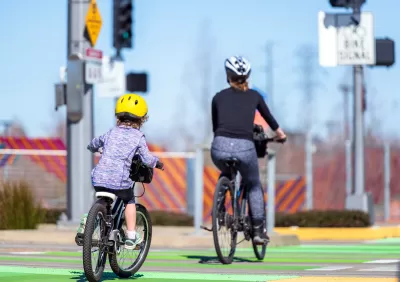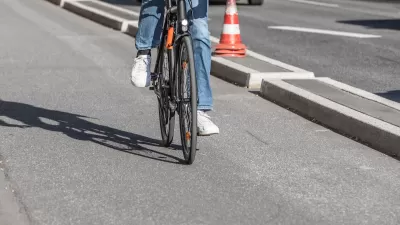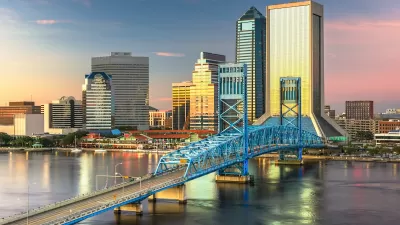A lack of safe bike and pedestrian infrastructure can drive young families away from places that don’t accommodate car-free residents.

In an essay in Streetsblog USA, Ned Resnikoff highlights how even cities with ostensibly progressive policies often fail to provide safe pedestrian and bike infrastructure, sometimes driving away residents who want access to safe, convenient bike and pedestrian infrastructure.
In famously liberal Berkeley, California, where Resnikoff lives, city officials are “consistently choosing speed and convenience for automobiles over safety for pedestrians and people on bikes,” Resnikoff says. “[T]he final straw for me came when, after several years of pitched battle, city officials killed a modest plan to improve biker safety on Hopkins Street. That is when it finally became obvious to me that the city was simply unwilling to get serious about ensuring that all residents could move about the city safely, whether they drive a car, or not.”
As Resnikoff points out, “Unfortunately, Berkeley is far from unique in that regard. As traffic violence has climbed over the past few years, a number of ostensibly progressive, climate-friendly cities have demonstrated that they are uninterested in taking even modest steps to support non-drivers.”
Resnikoff writes that this can motivate families like his, who chose to move to Emeryville for several reasons including that city’s commitment to safe bike infrastructure, to relocate or avoid certain cities. “Safe streets are, unequivocally, critical family-friendly policy. Progressive cities should be rushing to lead on this issue.”
FULL STORY: Essay: Why Even The Most Progressive Cities Are Failing Their Car-Free Residents

Maui's Vacation Rental Debate Turns Ugly
Verbal attacks, misinformation campaigns and fistfights plague a high-stakes debate to convert thousands of vacation rentals into long-term housing.

Planetizen Federal Action Tracker
A weekly monitor of how Trump’s orders and actions are impacting planners and planning in America.

San Francisco Suspends Traffic Calming Amidst Record Deaths
Citing “a challenging fiscal landscape,” the city will cease the program on the heels of 42 traffic deaths, including 24 pedestrians.

Defunct Pittsburgh Power Plant to Become Residential Tower
A decommissioned steam heat plant will be redeveloped into almost 100 affordable housing units.

Trump Prompts Restructuring of Transportation Research Board in “Unprecedented Overreach”
The TRB has eliminated more than half of its committees including those focused on climate, equity, and cities.

Amtrak Rolls Out New Orleans to Alabama “Mardi Gras” Train
The new service will operate morning and evening departures between Mobile and New Orleans.
Urban Design for Planners 1: Software Tools
This six-course series explores essential urban design concepts using open source software and equips planners with the tools they need to participate fully in the urban design process.
Planning for Universal Design
Learn the tools for implementing Universal Design in planning regulations.
Heyer Gruel & Associates PA
JM Goldson LLC
Custer County Colorado
City of Camden Redevelopment Agency
City of Astoria
Transportation Research & Education Center (TREC) at Portland State University
Jefferson Parish Government
Camden Redevelopment Agency
City of Claremont





























